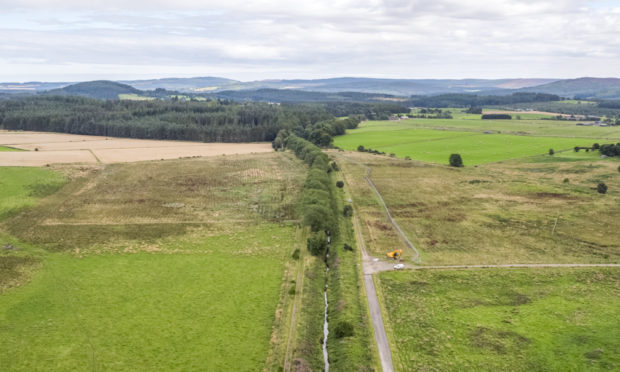A meandering burn in Aberdeenshire that was changed into a straight channel in the 18th century for farming and railway development will be returned to its natural splendour to create habitats for wildlife.
The Beltie Burn, near Torphins, is a tributary of the River Dee.
More than 200 years ago, the waterway was engineered into a straight line for agricultural purposes, and to later make way for the Deeside Railway line.
But now the Dee Catchment Partnership will carry out new project to restore the area to its original state, and make a new 1.2 mile stretch of naturalised river corridor with 24 acres of floodplain to allow nature to thrive.
It is hoped the changes to the local environment will mean more food for the animals living in and around the river, and more places for creatures like fish to spawn.
Work will begin at the site this month.
Susan Cooksley, the partnership’s manager, is heading the project.
She said: “Originally a twisting channel flowing through low-lying wetlands, the Beltie Burn’s middle reaches near the Old Deeside Line have been heavily straightened, embanked, widened and deepened.
“This has degraded habitats for fish, plants and invertebrates – the current channel contains far too much silt and sand, offering no salmon spawning habitat.
“The deepening means the burn is completely disconnected from its floodplain, reducing available wetland habitat and the capacity of the whole area to store floodwaters.”
As well as a more natural, meandering watercourse, the project will include planting of native trees at the riverside.
The Dee Catchment Partnership is a collaboration of the Dee District Salmon Fishery Board, the River Dee Trust and the James Hutton Institute, supported by the Nature Scot (formerly Scottish Natural Heritage) Biodiversity Challenge Fund, Aberdeenshire Council, Scottish Forestry and the Scottish Environment Protection Agency.
Edwin Third, river operations manager of the Dee District Salmon Fishery Board, added: “While the middle reaches of the burn are extremely degraded, the upper and lower reaches of the 20km (12.4 mile) Beltie Burn retain many natural characteristics.
“By restoring this break in the continuity of the river system, the whole catchment will benefit.
“These wetland habitats typically create around 150 times more food for fish and other animals than straightened channels can provide, so we really hope to see the return of spawning fish as part of a thriving ecosystem.”
